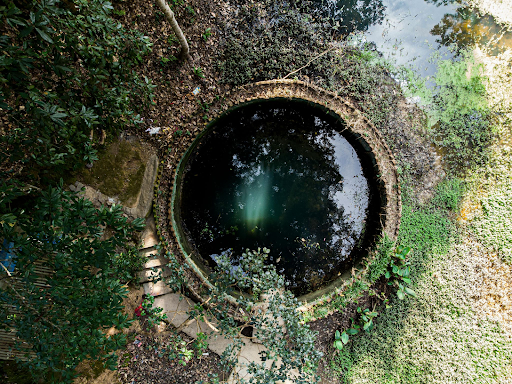The Ultimate Guide to Koi Behavior: Signs of Stress, Happiness, and Health
Koi fish are as mesmerizing as they are mysterious. As ornamental pond fish, they bring beauty and serenity to any garden, but understanding koi behavior can be a bit challenging. Since koi can’t communicate through words, it’s crucial to observe their body language, swimming patterns, and other signs to gauge their well-being. From subtle cues of stress to displays of happiness, decoding koi behavior can help you ensure your pond is a healthy, harmonious environment. This guide explores the essentials of koi behavior, offering insights on signs of stress, happiness, and health so you can enjoy your koi to the fullest.
Understanding Koi Behavior Basics
Every koi fish enthusiast should know that koi are highly social creatures. They form close-knit groups and display their personalities through interaction with other koi and even their human caretakers. Knowing the basics of koi behavior will allow you to detect abnormal signs that could indicate potential issues.
In general, a healthy koi will swim gracefully, explore its surroundings, and interact with other fish in a calm and social manner. Here’s a closer look at behaviors that signal a happy and healthy koi and how to spot signs of distress.
Recognizing Signs of Happiness in Koi
Happy koi are easy to spot once you know what to look for. Here are a few telltale behaviors that indicate your koi are content in their environment:
- Active Swimming and Interaction
Koi that swim actively without signs of lethargy are usually in good spirits. They’ll often swim around the pond, exploring every nook and cranny, and interact with their pond mates playfully. - Feeding Enthusiasm
Koi are notorious for their excitement at feeding time. A happy koi will approach the pond’s surface eagerly during feeding, sometimes even nibbling on food directly from your hand. This behavior shows trust and comfort with their environment and caretaker. - Bright and Vibrant Colors
Color intensity is often linked to koi health and happiness. When koi are happy and healthy, their colors tend to be vibrant. While colors can vary depending on diet and genetics, a noticeable dulling could indicate stress or poor health. - Social Behavior
Koi enjoy socializing with each other. You’ll often see them swimming in groups or resting close together. If you notice one koi consistently isolating itself, it could be a red flag signaling stress or illness.
Common Signs of Stress in Koi
Stress in koi can arise from various factors, such as poor water quality, temperature changes, or inadequate nutrition. Recognizing these stress signals early can help prevent more severe issues from arising.
- Erratic Swimming and Darting
When koi swim erratically, darting around the pond or rubbing against objects, it’s often a sign of stress. This behavior could be due to parasites, poor water quality, or overcrowding in the pond. - Surface Gasping
If you see your koi constantly gasping at the surface, it’s a sign that they’re struggling to get enough oxygen. This behavior is often linked to low oxygen levels in the water, a common issue during hot weather or in poorly aerated ponds. - Loss of Appetite
When koi are stressed, they may lose interest in food, refusing to eat even during regular feeding times. A lack of appetite can quickly lead to malnutrition, so it’s essential to address this behavior if you notice it consistently. - Clamped Fins
Koi with clamped fins—meaning their fins are held tightly against their bodies—are usually under stress. This can result from poor water conditions, such as high ammonia levels or sudden temperature shifts. - Isolation
If a koi isolates itself from the group, it may be experiencing stress or illness. Healthy koi are social and usually prefer being near other fish, so isolation is a cause for concern and warrants investigation.
Indicators of Good Health in Koi
To maintain a healthy koi pond, it’s essential to know what healthy koi behavior looks like. Healthy koi have certain characteristics that can provide reassurance to pond owners:
- Steady, Balanced Swimming
Healthy koi swim steadily, with a natural flow and balance. They should be able to change direction smoothly without struggle. If a koi appears to have difficulty swimming or maintaining balance, it could indicate an issue with its swim bladder or other internal problems. - Clear Eyes and Scales
Healthy koi have clear, bright eyes and scales without any visible damage, spots, or ulcers. Cloudy eyes, raised scales, or visible wounds should be addressed immediately as they could indicate infection or parasites. - Frequent Breathing but No Gasping
Healthy koi will breathe consistently but not excessively. Breathing should look calm and even, without excessive gill movement or gasping at the surface. - Healthy Appetite
Consistent feeding behavior is a sign of good health. Healthy koi are typically enthusiastic about eating and have no trouble digesting their food. - Regular Interaction with Other Koi
Healthy koi are typically friendly and curious. You’ll see them socializing with other fish in the pond, swimming in a calm, relaxed manner.
Creating the Ideal Environment for Happy, Healthy Koi
To ensure your koi thrive, you need to create an environment that supports their health and minimizes stress factors. Here are some key steps to maintain an optimal pond environment:
- Maintain Proper Water Quality
Good water quality is essential for koi health. Regularly test the water for pH, ammonia, nitrites, and nitrates. Keep the pH around 7.0 to 8.0, and ensure ammonia and nitrite levels are as close to zero as possible. Changing about 10–15% of the water weekly can help maintain good quality. - Control Water Temperature
Koi are sensitive to extreme temperature changes. Ideally, the water temperature should be between 59–77°F (15–25°C). During winter, consider using a pond heater to prevent the water from dropping too low. - Ensure Proper Aeration
Adequate oxygen is vital for koi health. Install an air pump or fountain to keep the water oxygenated, especially during warm weather when oxygen levels can drop. - Provide Hiding Spots and Shade
Koi benefit from shaded areas and hiding spots where they can escape intense sunlight or hide when feeling threatened. This can be achieved with floating plants, rocks, or pond decor. - Feed a Balanced Diet
Koi require a balanced diet to support their vibrant colors and overall health. Look for high-quality koi pellets and consider supplementing with fruits and vegetables. Be mindful of feeding amounts, as overfeeding can lead to water quality issues.
FAQs About Koi Behavior and Health
Q1: How can I tell if my koi are sick?
A: Common signs of illness in koi include isolation, loss of appetite, clamped fins, erratic swimming, and changes in color. If you notice any of these signs, check water quality and consider consulting a veterinarian specializing in fish.
Q2: Why are my koi gasping at the surface?
A: Gasping usually indicates low oxygen levels, which can be caused by poor aeration, high temperatures, or overcrowding. Increasing aeration with a pump or fountain can help.
Q3: How often should I feed my koi?
A: Feed koi once or twice daily during warmer months when they’re more active. In colder months, their metabolism slows, so feeding should be reduced or paused based on temperature.
Q4: What should I do if one of my koi isolates itself?
A: Isolation can be a sign of stress, illness, or injury. Check the koi for visible signs of illness, such as clamped fins or damaged scales, and test the water to ensure optimal conditions.
Q5: Are there specific koi behaviors that indicate breeding?
A: During breeding season, you may notice koi chasing each other in the pond. This is normal behavior, especially in spring when the water warms up.
Conclusion
Understanding koi behavior is essential for anyone who wants to keep these beautiful fish healthy and happy. By observing their swimming patterns, feeding habits, and social behaviors, you can quickly recognize signs of stress, happiness, or health concerns. Maintaining good water quality, providing a balanced diet, and ensuring adequate oxygen levels will go a long way in creating a safe and comfortable environment for your koi. With these insights, you’ll be better equipped to care for your koi and keep them thriving in your pond year-round.
For more information on caring for your koi, check out our complete guide on koi and ensure your fish remain vibrant and healthy.
Keep an eye for more latest news & updates on Glamour UER!






